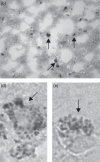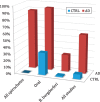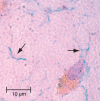Herpes Simplex Virus Type 1 and Other Pathogens are Key Causative Factors in Sporadic Alzheimer's Disease
- PMID: 26401998
- PMCID: PMC4923765
- DOI: 10.3233/JAD-142853
Herpes Simplex Virus Type 1 and Other Pathogens are Key Causative Factors in Sporadic Alzheimer's Disease
Abstract
This review focuses on research in epidemiology, neuropathology, molecular biology, and genetics regarding the hypothesis that pathogens interact with susceptibility genes and are causative in sporadic Alzheimer's disease (AD). Sporadic AD is a complex multifactorial neurodegenerative disease with evidence indicating coexisting multi-pathogen and inflammatory etiologies. There are significant associations between AD and various pathogens, including Herpes simplex virus type 1 (HSV-1), Cytomegalovirus, and other Herpesviridae, Chlamydophila pneumoniae, spirochetes, Helicobacter pylori, and various periodontal pathogens. These pathogens are able to evade destruction by the host immune system, leading to persistent infection. Bacterial and viral DNA and RNA and bacterial ligands increase the expression of pro-inflammatory molecules and activate the innate and adaptive immune systems. Evidence demonstrates that pathogens directly and indirectly induce AD pathology, including amyloid-β (Aβ) accumulation, phosphorylation of tau protein, neuronal injury, and apoptosis. Chronic brain infection with HSV-1, Chlamydophila pneumoniae, and spirochetes results in complex processes that interact to cause a vicious cycle of uncontrolled neuroinflammation and neurodegeneration. Infections such as Cytomegalovirus, Helicobacter pylori, and periodontal pathogens induce production of systemic pro-inflammatory cytokines that may cross the blood-brain barrier to promote neurodegeneration. Pathogen-induced inflammation and central nervous system accumulation of Aβ damages the blood-brain barrier, which contributes to the pathophysiology of AD. Apolipoprotein E4 (ApoE4) enhances brain infiltration by pathogens including HSV-1 and Chlamydophila pneumoniae. ApoE4 is also associated with an increased pro-inflammatory response by the immune system. Potential antimicrobial treatments for AD are discussed, including the rationale for antiviral and antibiotic clinical trials.
Keywords: Alzheimer’s disease; ApoE4; Cytomegalovirus; Herpes simplex; amyloid; dementia; neurodegeneration; pathogen.
Figures







References
-
- De-Paula VJ, Radanovic M, Diniz BS, Forlenza OV. Alzheimer’s disease. Subcell Biochem. 2012;65:329–352. - PubMed
-
- Wozniak MA, Mee AP, Itzhaki RF. Herpes simplex virus type 1 DNA is located within Alzheimer’s disease amyloid plaques. J Pathol. 2009;217:131–138. - PubMed
-
- Jamieson GA, Maitland NJ, Wilcock GK, Craske J, Itzhaki RF. Latent herpes simplex virus type 1 in normal and Alzheimer’s disease brains. J Med Virol. 1991;33:224–227. - PubMed
-
- Miklossy J. Emerging roles of pathogens in Alzheimer disease. Expert Rev Mol Med. 2011;13:e30. - PubMed
Publication types
MeSH terms
LinkOut - more resources
Full Text Sources
Other Literature Sources
Medical

